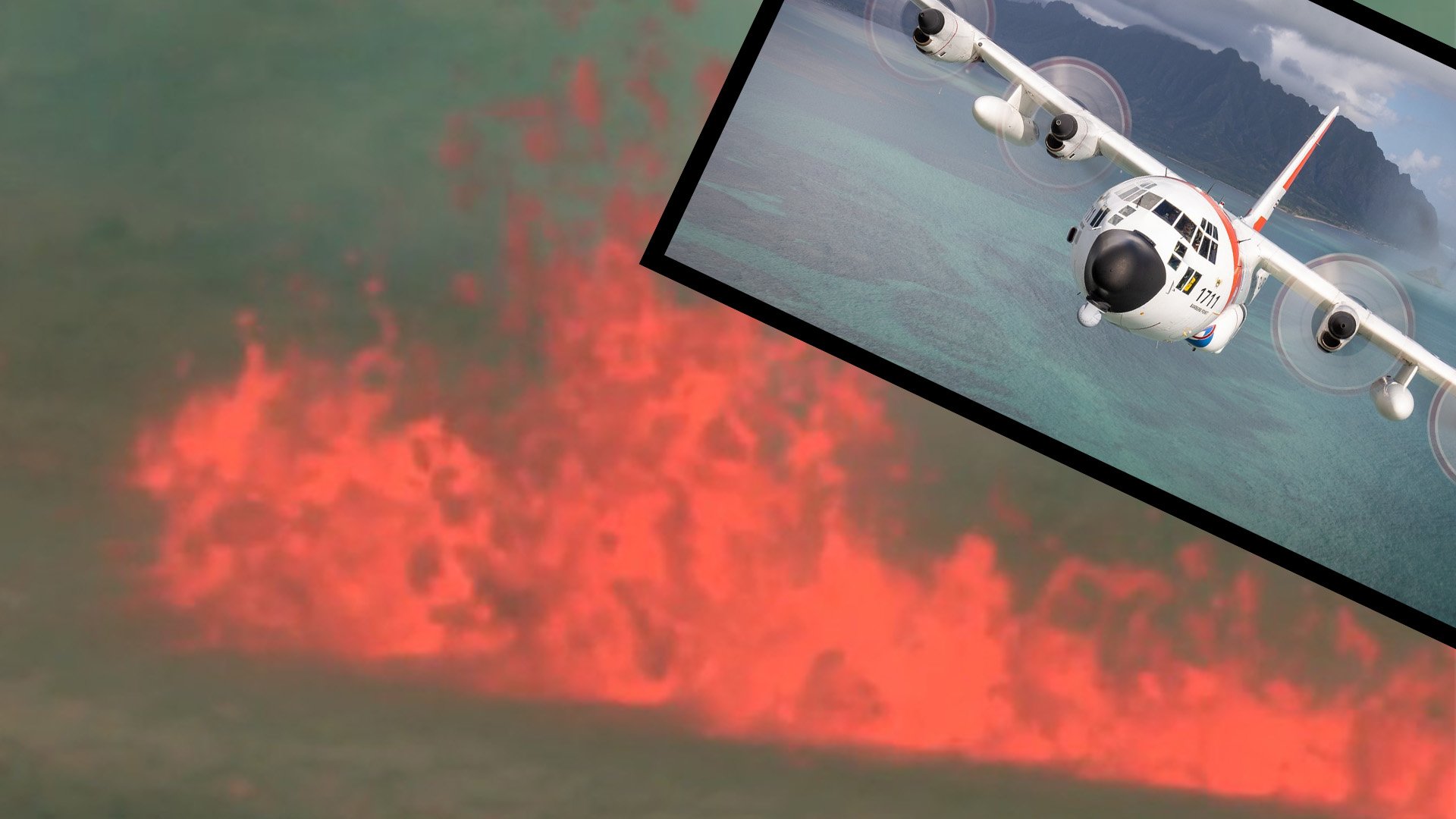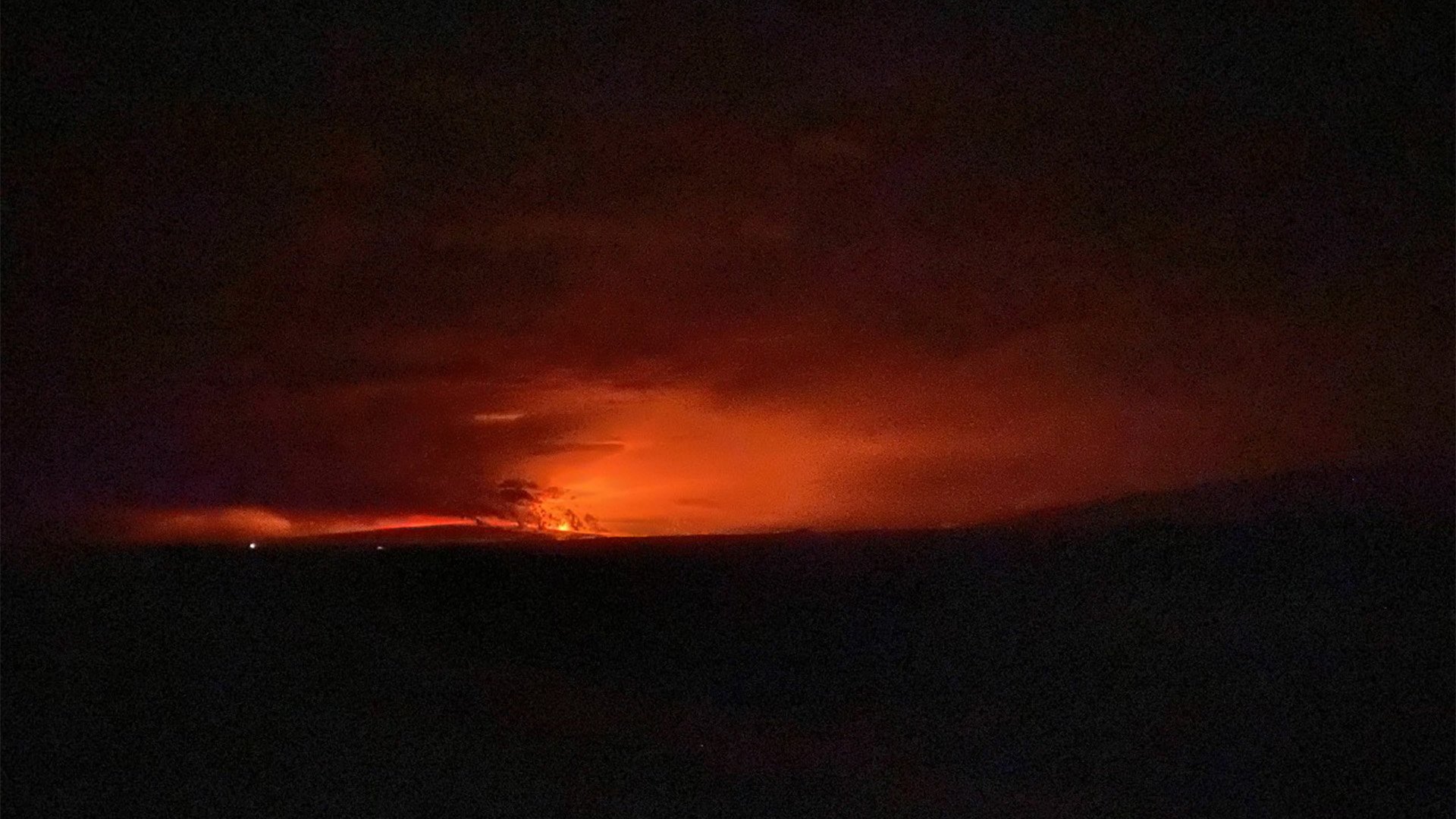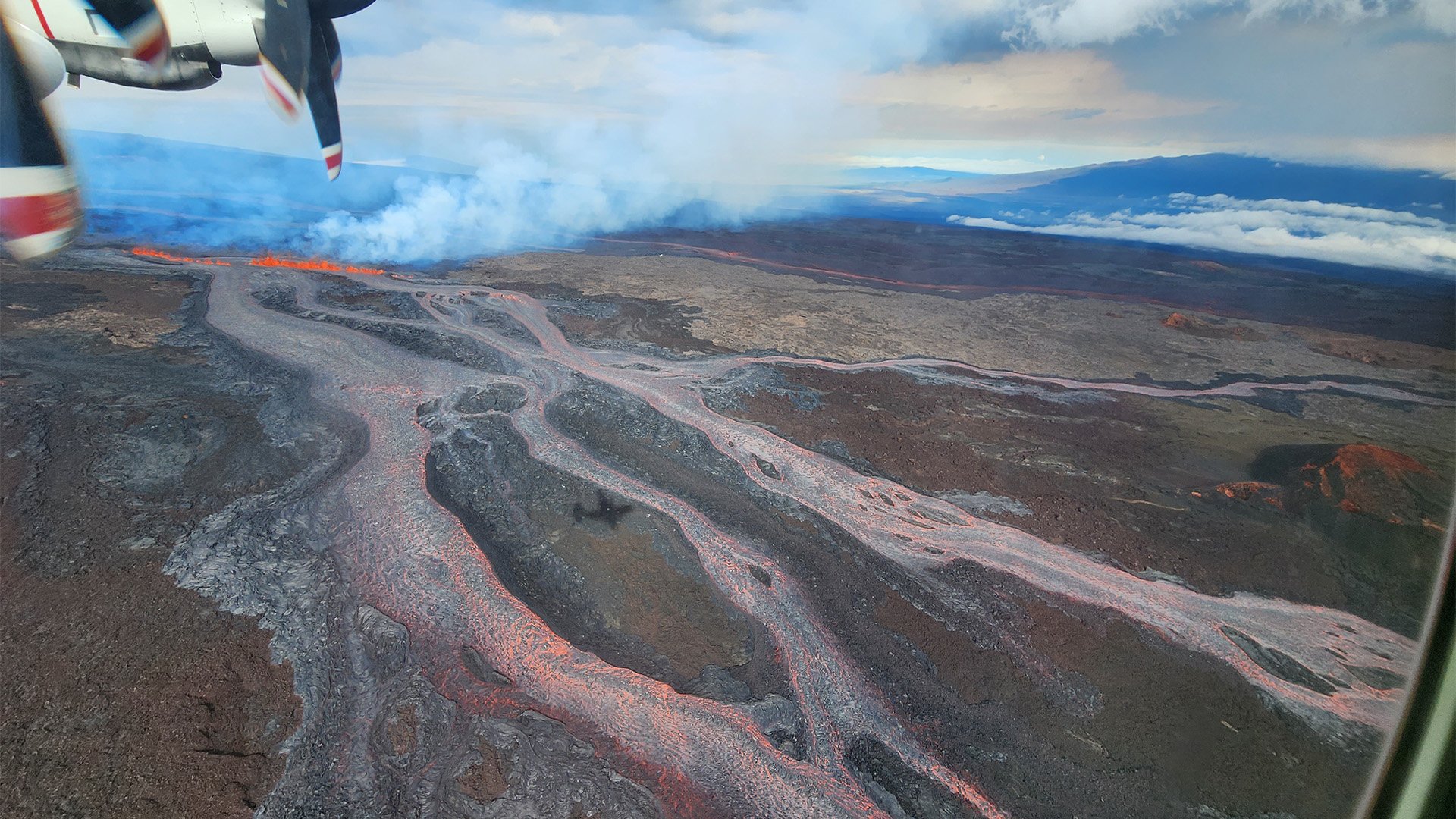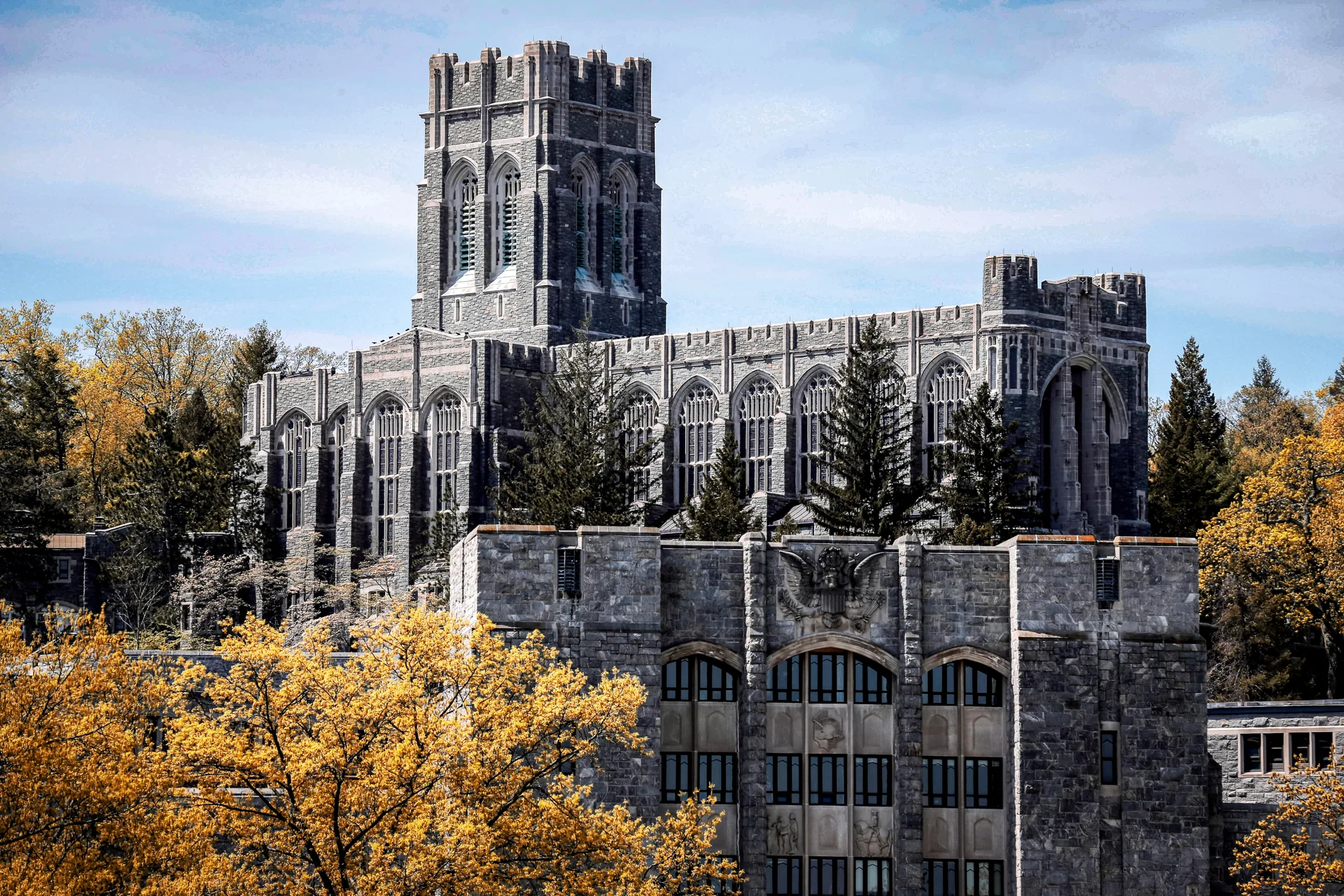Watch This Coast Guard Flyover of the World’s Largest Active Volcano

Ten hours after Hawaii's Mauna Loa volcano erupted late Nov. 27, 2022, a US Coast Guard HC-130H reconnaissance plan was ferrying local leaders and federal volcanologists over fissures fountaining lava. Coffee or Die Magazine composite.
When the world’s largest active volcano began shooting lava nearly 20 stories into the Hawaiian sky for the first time in 38 years, Big Island officials called the US Coast Guard for an emergency flyover.
And on Monday, Nov. 28, an Air Station Barbers Point HC-130H surveillance plane soared to Moku‘āweoweo, the summit caldera of Mauna Loa that began erupting at roughly 11:30 p.m. Sunday, according to the Hawaii Volcano Observatory.
“The Coast Guard values these inter-agency relationships and stands ready to support emergency operations across the Hawaiian Islands if capable,” said Lt. Eric Juback, the Coast Guard’s District 14 command duty officer, in a prepared statement emailed to Coffee or Die Magazine.
Inside the Herc sat Big Island Mayor Mitch Roth and members of the Hawaii Civil Defense Agency, US Geological Survey, and other state and county officials who needed to assess the unfolding crisis.
They arrived at around 9:30 a.m. Monday, and video footage taken from the plane captured the flow of lava across the Northeast Rift Zone. You can check out more Coast Guard footage here, too.

The Mauna Loa eruption as viewed from Waikoloa at about 1:25 a.m. local time, Nov. 27, 2022, on Hawaii's Big Island. Lava has overflowed the caldera. US Geological Survey photo.
Beginning deep under the ocean, Mauna Loa sprawls across half of the island, making any eruption a potential disaster.
The good news is that although three fissures began fountaining molten rock late Sunday, only one crevice is spewing lava now, and it’s not threatening any homes or towns, according to the US Geological Survey.
Officials said lava from the two higher fissures ran downslope, but stalled about 11 miles from Saddle Road. Fissure 3’s molten flow is moving east, parallel to the Northeast Rift Zone, but the flaming spring remains above 10,000 feet of elevation and more than 10 miles from the roadway.
Volcanologists warn that more fissures could open below where the lava is flowing now, and that molten material also might move down the mountain.

A fissure and lava flows on Mauna Loa's Northeast Rift Zone captured during a US Coast Guard flyover at approximately 9:30 a.m. local time on the Big Island in Hawaii, Nov. 28, 2022. The photo view is to the northwest, with Mauna Kea on the right hand side of the image. US Geological Survey photo by K. Lynn.
Lava running from the 1984 eruption stopped less than 5 miles from Hilo, the largest city on the island.
State health officials advised residents that the real danger now comes from vog, a volcanic smog of sulfur dioxide and acid droplets brewed when escaping gases mix with oxygen and sunlight.
They’re advising citizens to spend less time on outdoor activities that can trigger heavy breathing.
There’s also a visible plume of gases and ash towering over the volcano, and federal officials have issued a red warning, alerting all aviators to avoid the area.
Read Next: Cracking Great Lakes Ice, Christmas Tree Cutter Nears Chicago
BRCC and Bad Moon Print Press team up for an exclusive, limited-edition T-shirt design!
BRCC partners with Team Room Design for an exclusive T-shirt release!
Thirty Seconds Out has partnered with BRCC for an exclusive shirt design invoking the God of Winter.
Lucas O'Hara of Grizzly Forge has teamed up with BRCC for a badass, exclusive Shirt Club T-shirt design featuring his most popular knife and tiomahawk.
Coffee or Die sits down with one of the graphic designers behind Black Rifle Coffee's signature look and vibe.
Biden will award the Medal of Honor to a Vietnam War Army helicopter pilot who risked his life to save a reconnaissance team from almost certain death.
Ever wonder how much Jack Mandaville would f*ck sh*t up if he went back in time? The American Revolution didn't even see him coming.
A nearly 200-year-old West Point time capsule that at first appeared to yield little more than dust contains hidden treasure, the US Military Academy said.












